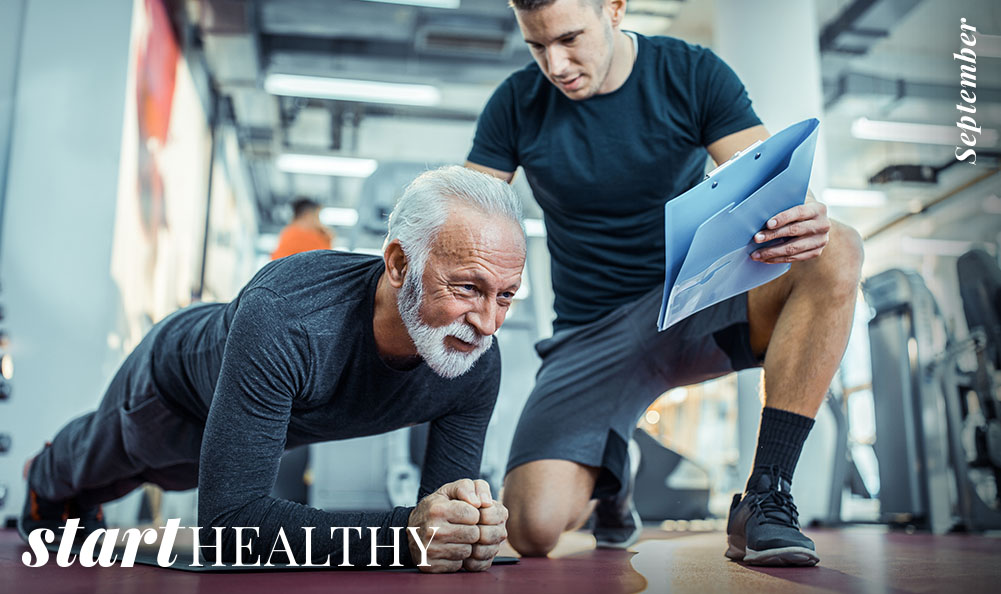The month of September can evoke many emotions. Some people relish in the transition it brings, while others yearn to hang on to every last minute of summer. This issue of Start Healthy is here to help you keep a positive outlook for fall with tips for learning new skills, a fall-flavored pumpkin recipe, a guide to supporting mental health, and solutions for avoiding video call fatigue.
There are plenty of benefits to expanding your knowledge well after your formal education is over, but not many people do. The tips in this issue can help you prioritize learning new skills and hobbies to benefit your brain and your overall wellness.
Pumpkin season is back! Inside you’ll find a recipe for wholesome pumpkin-spice muffins you’ll want to make all season long.
With shorter days, longer nights, and a dip in temperatures for much of the country, fall and winter can be challenging times for people who suffer from mental health disorders like anxiety and depression. The enclosed guide offers ideas to help you support a loved one’s mental health journey.
Many people have been working from home for over two years now, so it’s no surprise that some people still suffer from Zoom fatigue. Be sure to read the solutions for beating the video-call blues and successfully setting boundaries for your home and work life.
Here’s to embracing your health and wellness in the season ahead. As always, it’s a pleasure to send you this magazine.
Trying to learn new things throughout your life is beneficial in so many ways. For starters, science has shown that if you pursue education and engage your mind as you age, you may be less likely to experience cognitive decline. In addition, you can live a longer and happier life, make new friends, and gain skills that can help you in your career and everyday life. Picking up new abilities and gaining additional knowledge can make your life more interesting and open the door to novel and fun experiences too. Use these tips to obtain new skills and discover more about the world around you.
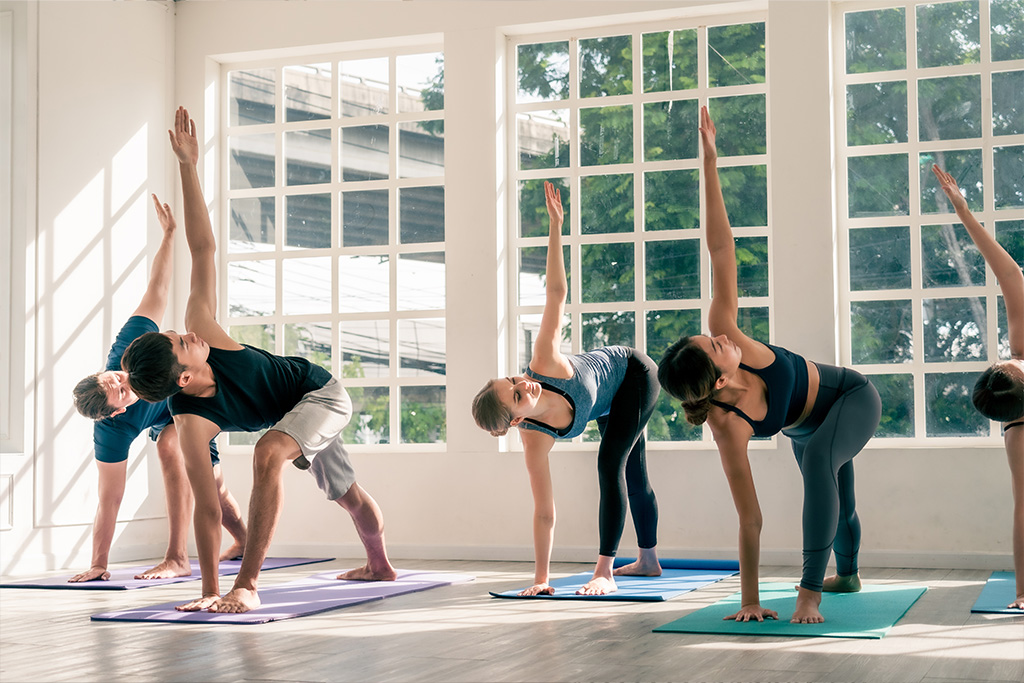
Consider enrolling in a class to learn new skills or find out about something that interests you. You can take a class at a local university, in your community, or online through companies like MasterClass, Coursera, and Skillshare. For instance, you can pick up tennis from Serena Williams through MasterClass, take a University of Pennsylvania class on viral marketing through Coursera, and learn social media marketing through Skillshare. You could also pursue a degree. More and more adults, even those in middle age, are going back to college to gain career skills.
Some of the world’s highest achievers, such as Bill Gates and Oprah Winfrey, attribute at least some of their success to reading. Whether you peruse a book, magazine, or online news site, you can open the door to new ideas and gain insights about anything from astronomy to zoology. You can read books for free by going to your local library or by using an app like Libby or Open Library.

A hobby can be more than just a pastime; it can also be an education. For instance, if you were to take up fishing, you could discover the best ways to catch a fish, hone your problem-solving skills and patience, and get to know more about local ponds, fish, and ecosystems. Pursuing new hobbies can help you expand your social circles, too, as you meet others who share the same interests as you.
Traveling is an excellent way to expand your horizons. Whether you take a trip here in the US or abroad, you can get to know more about various people, foods, places, and customs, plus how to coordinate travel plans and find the best places to stay.
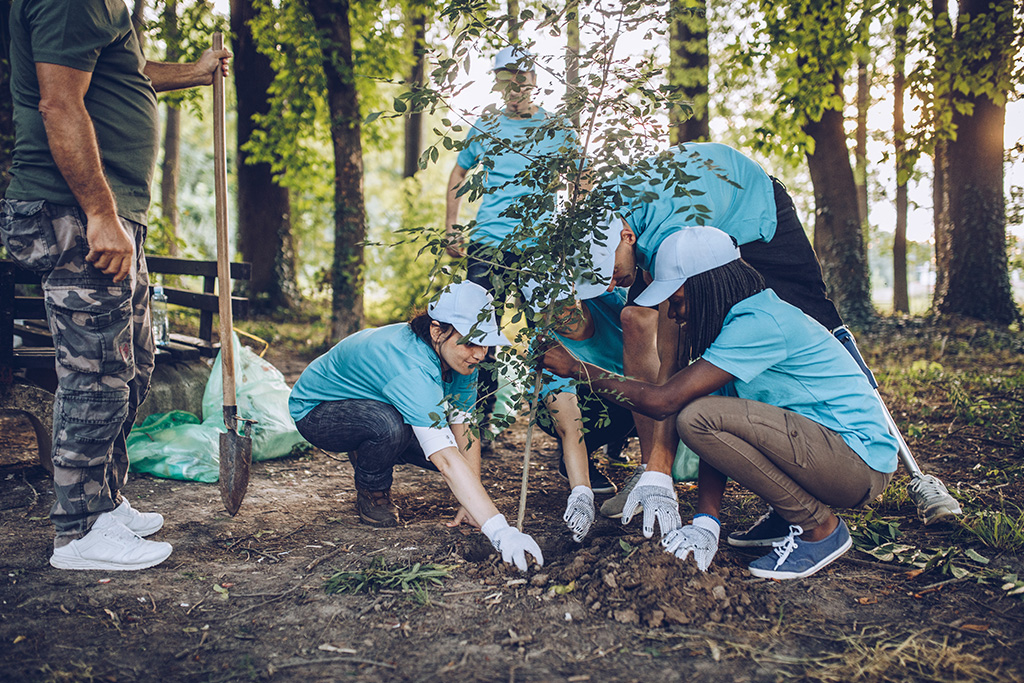
Volunteering is most often thought of as helping others, but it can also benefit you. For example, if you assist at a soup kitchen or organize a coat drive, you can gain essential knowledge like how to be a leader, manage a project, or cook a delicious meal for many people.
recipe by Patterson Watkins
photos by Patterson Watkins
There is nothing like enjoying a warm and tasty pumpkin muffin as an autumn treat. These pumpkin-crumble muffins are packed with whole-grain goodness and are easy to make. They are perfect for breakfast or enjoyed as an afternoon snack with a cup of hot tea or coffee. Enjoy!

Makes 6 large muffins or 12 mini muffins
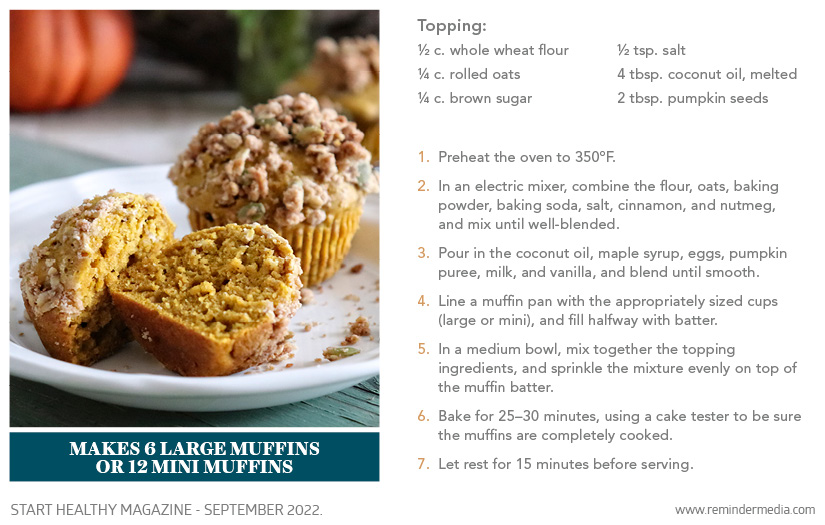




Fear, anxiety, and sadness are all a part of the human condition. While most people experience these emotions to some degree throughout their lives, it is common for feelings of anxiety and depression to take over at times.
Anxiety disorders are the most prevalent mental health conditions in America: some forty million US adults struggle with anxiety each year. In addition, depression and anxiety are often connected. Suffice to say, you likely know someone who is currently battling an anxiety disorder, depression, or a combination of the two.
While the statistics may feel disheartening, there is hope. Below are just a few steps you can take to help care for others and help them tackle common mental health problems head on.

Although strides have been made in recent years, mental health can still be a taboo topic. Not many people are willing to open up about their struggles with it, and they may be afraid of appearing weak or burdening those around them. However, to help ensure your loved one gets the support they need, you should understand how common these feelings are.
Organizations like the Anxiety and Depression Association of America (ADAA), the National Alliance on Mental Illness (NAMI), and the National Institute of Mental Health (NIMH) offer a wealth of resources, statistics, and other information on common mental health disorders, including anxiety, depression, and PTSD. They also are great places to start if you’re looking to find a professional reference for a loved one or learn more about a specific mental health condition.
Mental health disorders can manifest through changes in social behavior. For example, a person suffering from depression might become more reclusive and unwilling to participate in activities they used to enjoy. This can make it challenging for you to offer support, but that doesn’t mean you shouldn’t try. NAMI suggests maintaining an open and honest line of communication and showing support through listening instead of dwelling on their behavioral changes. The organization also offers peer-to-peer support for both people with anxiety and depression and their loved ones.
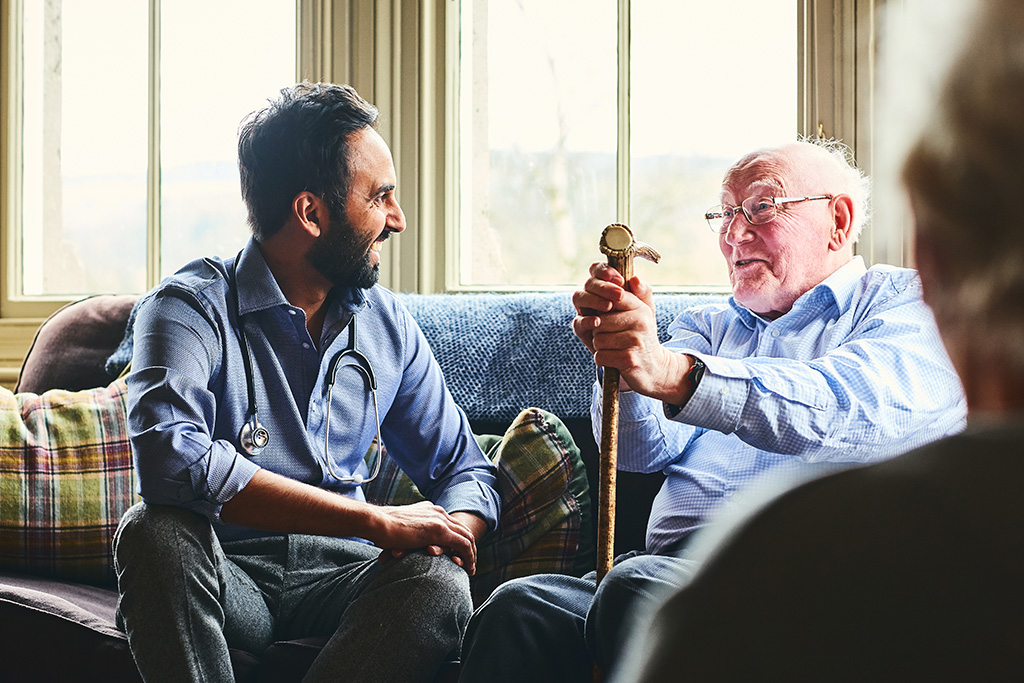
As mentioned above, behavioral changes can make it difficult to feel and stay connected if a friend or relative is dealing with a mental health issue. What may seem like a minor inconvenience or passing fear to you could be crippling for someone dealing with anxiety or depression, so it’s important to practice patience, consideration, and compassion. Checking in with them can make a world of difference. Researchers at Columbia University recommend talking points including the following, but keep in mind your loved one’s circumstances and how much you currently know about the state of their mental health.
These questions are a helpful place to start. However, to provide the best level of support, you should also practice empathy and proper listening techniques by pausing before responding, putting yourself in their shoes, and allowing them to lead the conversation.

There are many factors, both internal and external, that contribute to a person’s mental health. But there are steps you can take to help others manage symptoms of anxiety and depression. Get to know the common warning signs of these disorders, such as restlessness and irritability for anxiety and a loss of energy and appetite for depression, so you can act early and try to help stop their progression.
It’s also imperative to practice what you preach. After all, if you’re going to help loved ones prevent or combat these disorders, you need to take care of your own mental health first. So try to make sure that both you and your loved ones are taking positive self-health measures, such as getting ample rest, eating properly, and participating in fun activities. Poor self-care can quickly lead to mild feelings of anxiety and depression that can grow over time. Don’t hesitate to reach out for help if symptoms creep up or become an impediment to daily life, and encourage others to do the same if it happens to them.
While mental health can be a complicated topic to tackle, it’s something that affects everyone in some way. The good news is that no one needs to be alone in their struggle with it. The best way to make progress with mental health disorders is to talk about them and show support for those who need it.
If you or someone you know is struggling with feelings of anxiety or depression, be sure to consult a professional for proper care.
Eric Yuan, the founder of Zoom, actually coined the phrase Zoom fatigue. Also known as virtual or video-conferencing fatigue, it happens when constantly being on video calls drains you mentally and physically. And with more than three hundred million daily Zoom participants alone, it’s taking a worldwide toll. Though not a formal diagnosis, Zoom/video conferencing fatigue is real. Most people are heavily engaged in the digital world on a day-to-day basis, but the increase in Zoom and other video conferencing calls has caused profound stress.
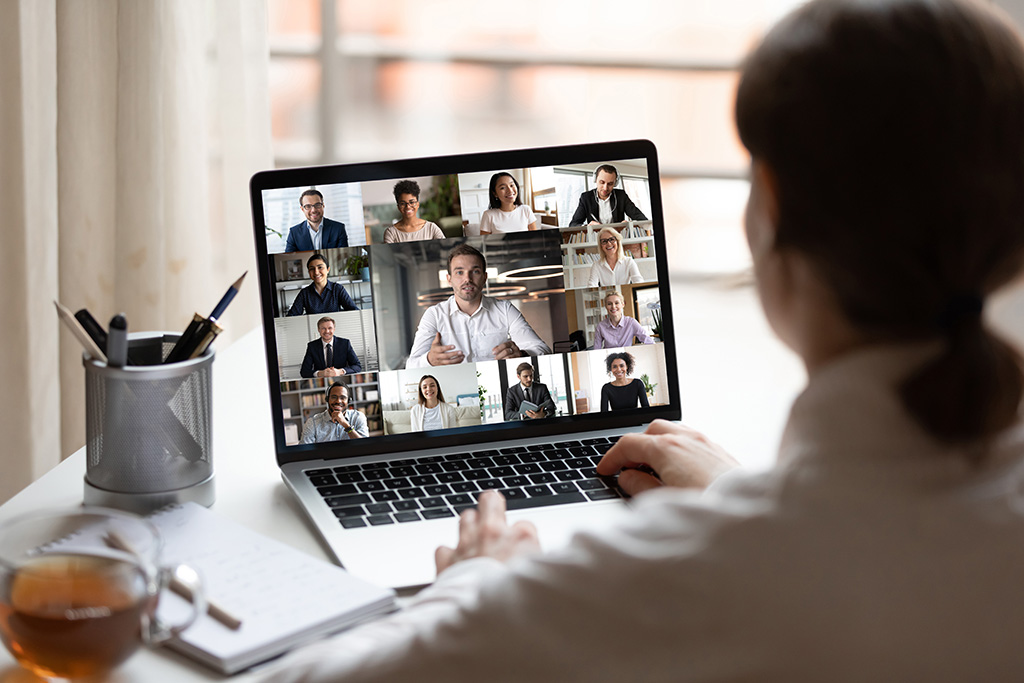
In a 2021 Stanford University survey, 10,000 participants were asked a series of general questions about the five different types of video fatigue. They were measured by levels of overall tiredness, social interactions, a sense of feeling overwhelmed, stress on their eyes, and a lack of drive to engage in new activities. Results showed that women experienced more Zoom fatigue than men. Reasons pointed to what is called “mirror anxiety,” which triggers someone to be hyperfocused on what they look and sound like and to be in a constant state of self-monitoring and criticism, which has been shown to lead to anxiety and depression.
Jeremy Bailenson, the founding director of Stanford University’s Virtual Human Interaction Lab, concluded that because people do not stare into someone else’s face when at close range, it’s an unnatural state to be in while video conferencing. At in-person meetings, the attendees may be taking notes or reviewing informational handouts. Video conferencing or Zoom calls interrupt this natural flow, coercing attendees to hyperfocus on everyone during the call; Bailenson calls this a “hyper gaze.” The continuous fear of being perceived as inattentive during video meetings can be stressful and exhausting; this makes people feel that they are always on high alert, causing undue stress. Technology can also cause slight delays, which may result in people speaking over one another, creating confusion and necessitating extra effort for everyone to be heard.

Zoom fatigue can show up differently for each individual, but, in the end, it can result in burnout. Physically, you might experience fatigue, sore muscles, and even insomnia. Mentally, it can cause concentration issues and forgetfulness, and you may find yourself getting easily frustrated and irritable with your coworkers. Ultimately, it can branch out to impact your personal relationships; for example, you might be so exhausted that you find it difficult to be emotionally available to your loved ones.
You can lessen your risk of being affected by Zoom fatigue by doing the following:
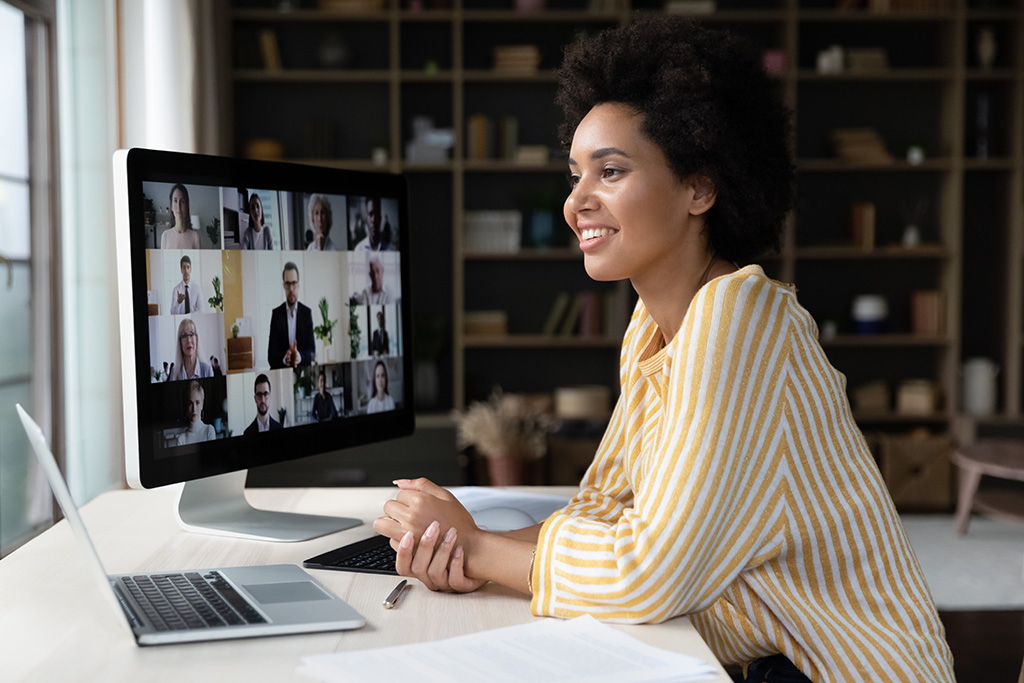
Zoom etiquette varies from company to company, and, depending on your company’s rigidity or flexibility, it can place cognitive demands on you that can become quite challenging over time. For example, does your company require you to be in a shirt and tie or wear a dressy top to show a formal, corporate look every day? Or is it a more laid-back environment where you are not required to be dressed to the nines? How tolerant is your superior to possible background interruptions, such as your dog barking, your baby crying, or construction happening outside your window? It can be difficult to completely separate your work life from your personal life when working remotely. Knowing the expectations and having an open conversation with your manager about your work-life/home-life challenges can help alleviate additional Zoom fatigue.
Mollie West Duffy, an expert in organizational design, development, and leadership coaching, and coauthor of the book No Hard Feelings: The Secret Power of Embracing Emotions at Work, has been consulting with companies on how best to return to the workplace post COVID-19. She believes that businesses will need to continue to work with their employees on how to best navigate the postpandemic workplace ethos.
The bottom line is that videoconferencing calls are here to stay, but it’s important to understand your company’s expectations and find the right work-life balance for job satisfaction.
